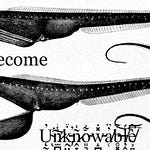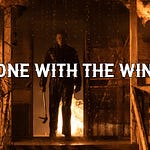My podcast guest is Chuck Johnson, a musician who composes meditative songs on the pedal steel guitar.
Chuck grew up in North Carolina, where he heard pedal steel in the context of country music. After building a career playing fingerpicked acoustic guitar in the style of Elizabeth Cotten and John Fahey, he picked up the pedal steel and took it in a new direction, using its vocal quality and unlimited sustain to create mournful soundscapes.
On his new album The Cinder Grove, Chuck recreates lost performance spaces through a technique called convolution reverb. We spent some time discussing the sensory memory of places that have either been destroyed or become inaccessible, and I thought that theme dovetailed nicely with what I’ve been reading about the architect Paul Rudolph’s “psychology of space.”
Here’s something beautiful he said during our conversation:
“I think that when a space is lost and exists only in memory, it’s sort of like what happens when people are lost. I guess depending on how they’re lost and how you’re able to process the loss, they can linger in our memory like ghosts. With the spaces that I’m working with or thinking about in The Cinder Grove — which are these urban community spaces but also forests and wild areas that have been lost in fires — just because I’m a musician and I have sonic experiences of places … it’s useful for me to try to work with my memories of these places and process the loss that way, using sound.”
I used a few snippets from The Cinder Grove in the episode, but I would encourage you to spend some time with the entire album if you get the chance. You can stream and buy Chuck’s music at chuckjohnson.bandcamp.com.
Friend-of-the-newsletter Eddie Newman had Chuck as a guest on his own podcast last year, and he graciously introduced us. You can check out Comfort Monk Episode 46 if you want to hear more of the story.
Grayson Haver Currin also wrote a moving profile that ran in the New York Times on Feb. 10 titled “Chuck Johnson’s Ode to What’s Been Lost in California’s Fires.”
The episode art is “Fire evening” (1929) by Paul Klee.














Share this post